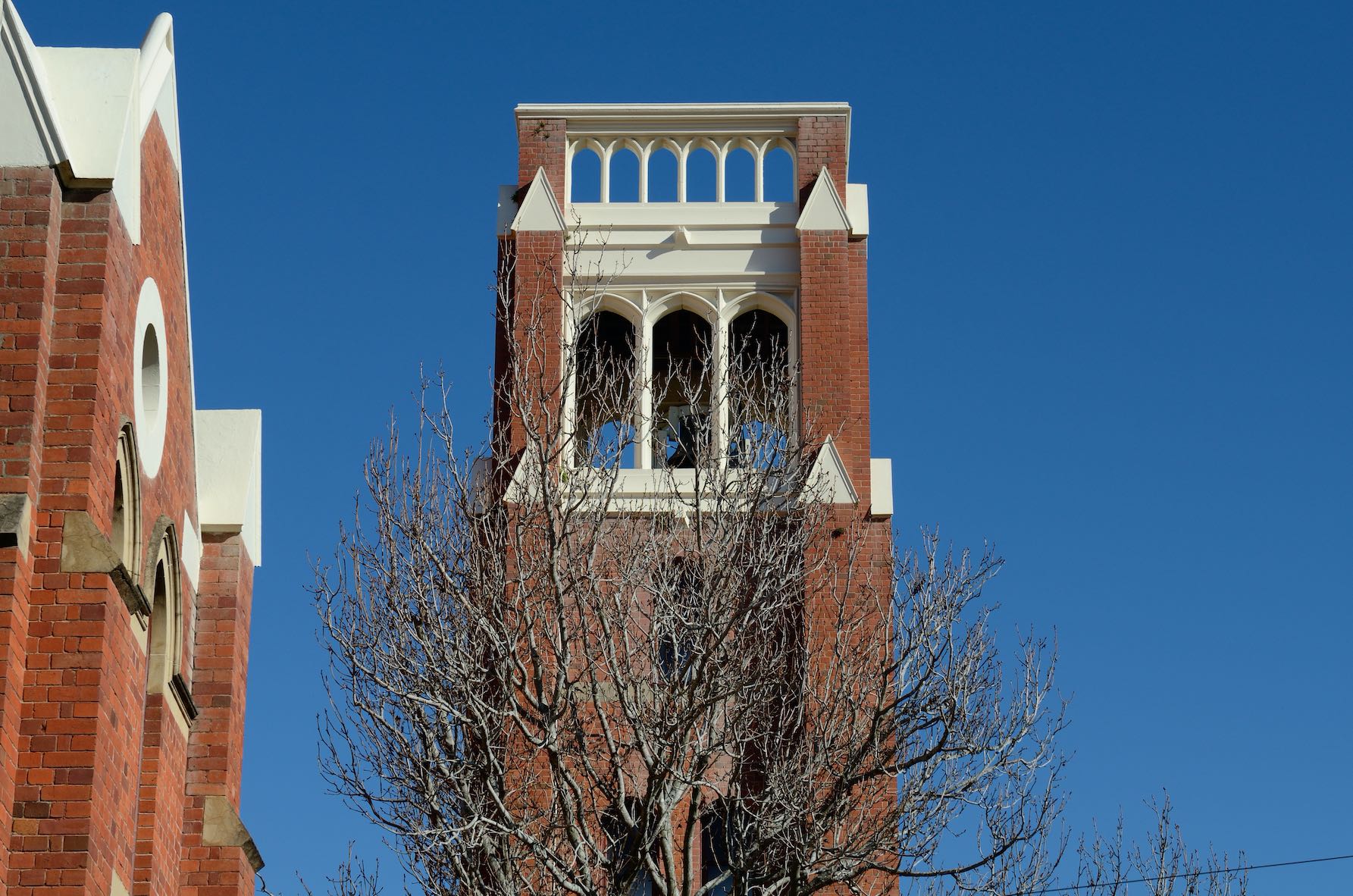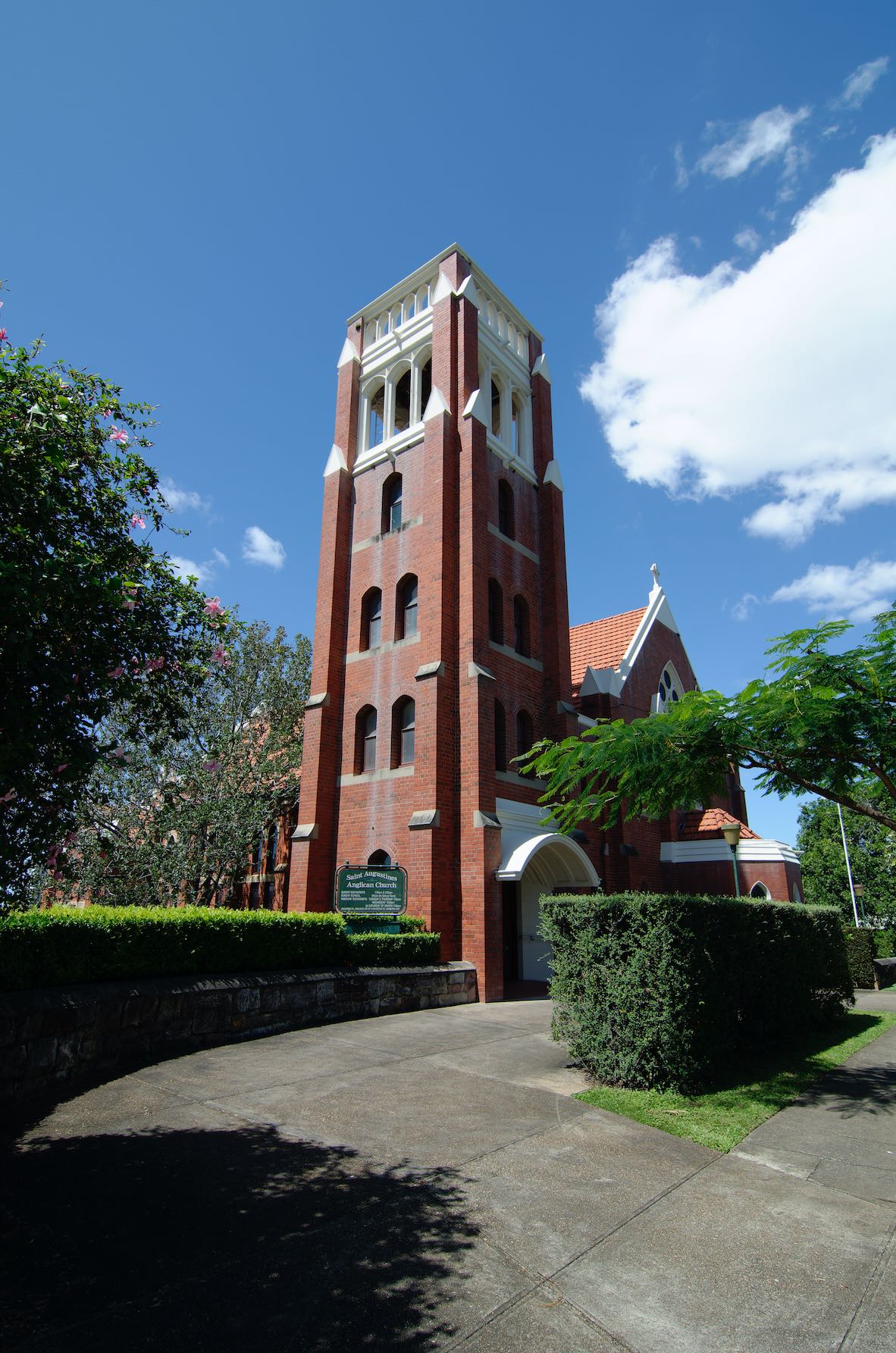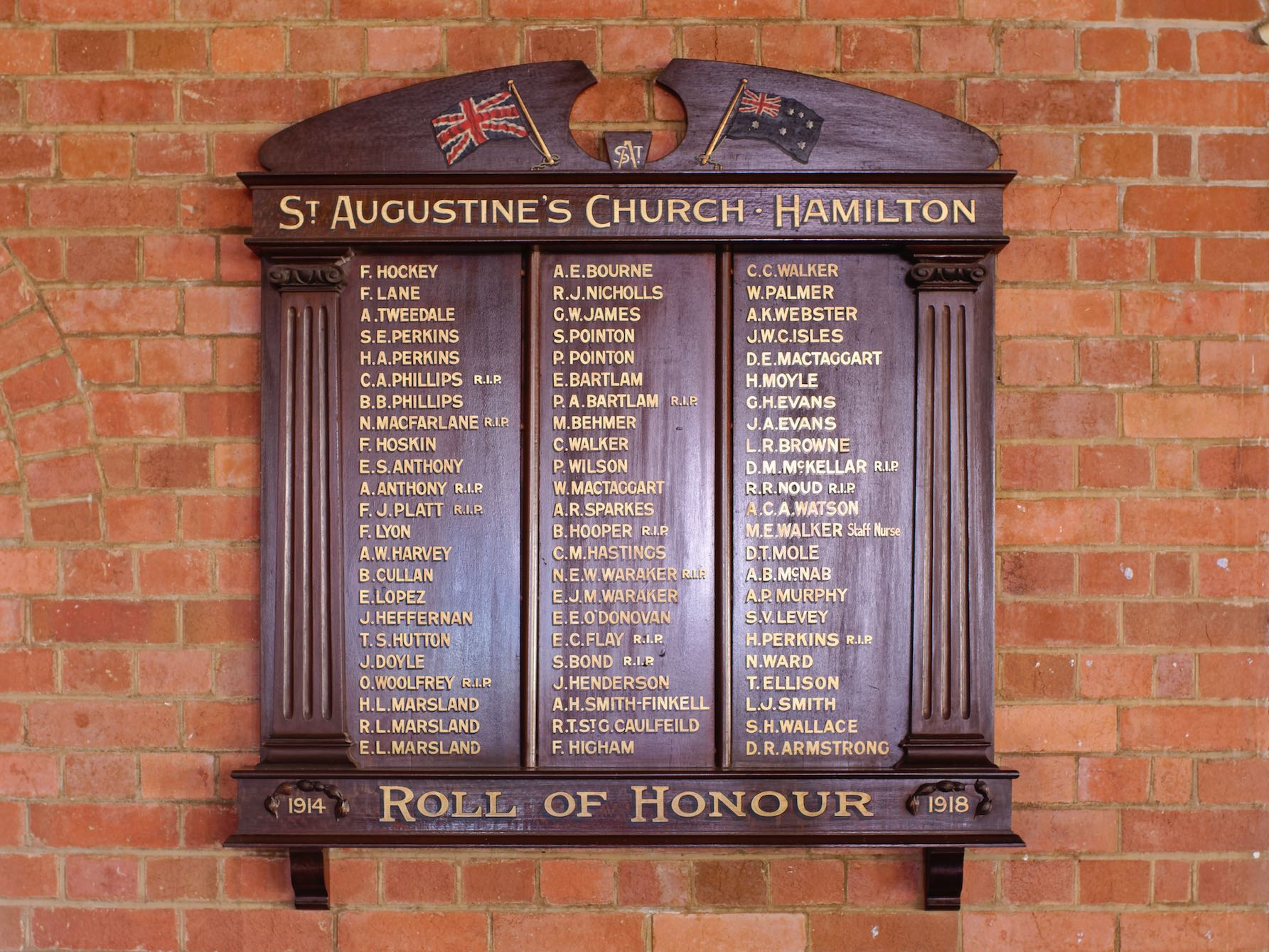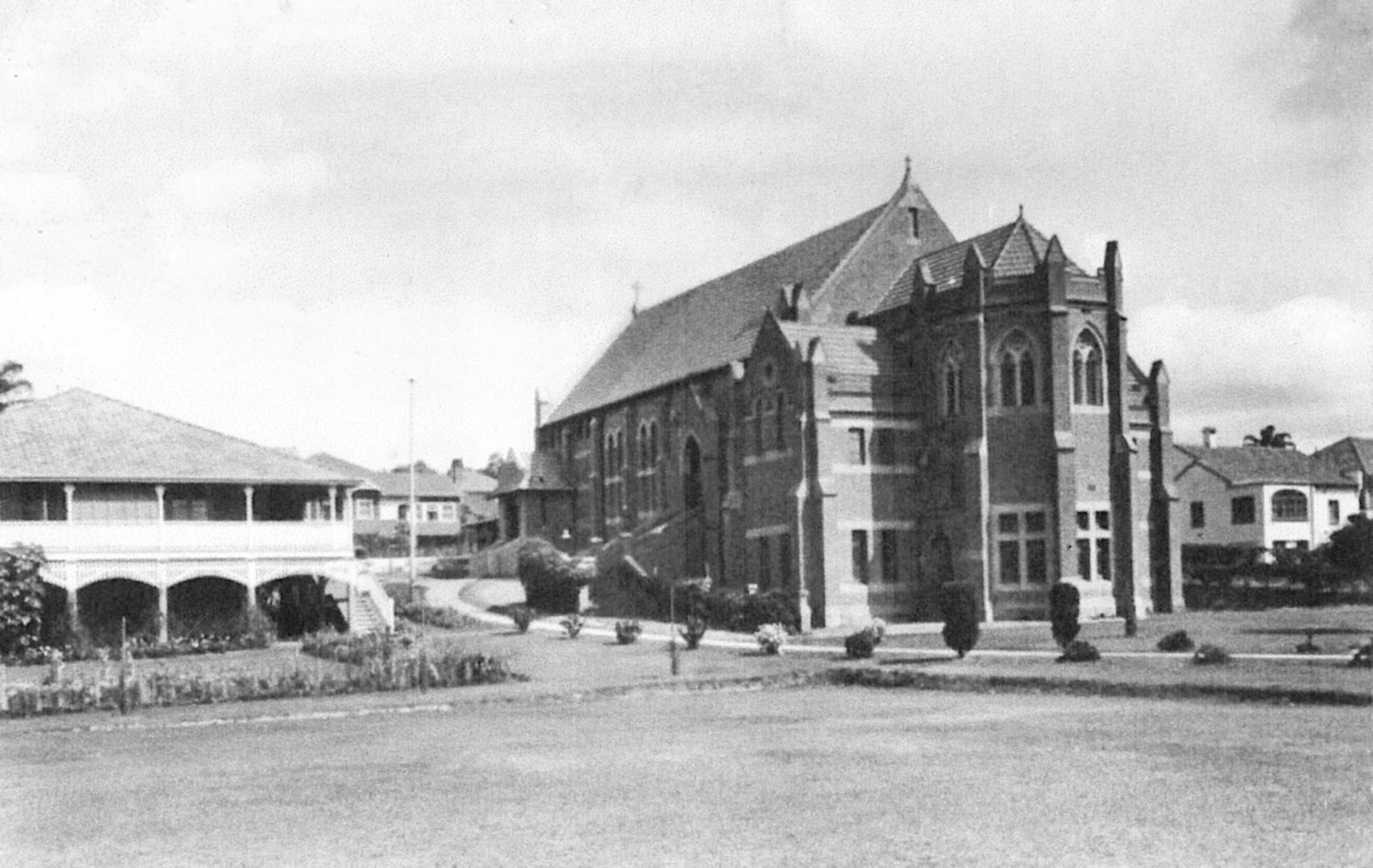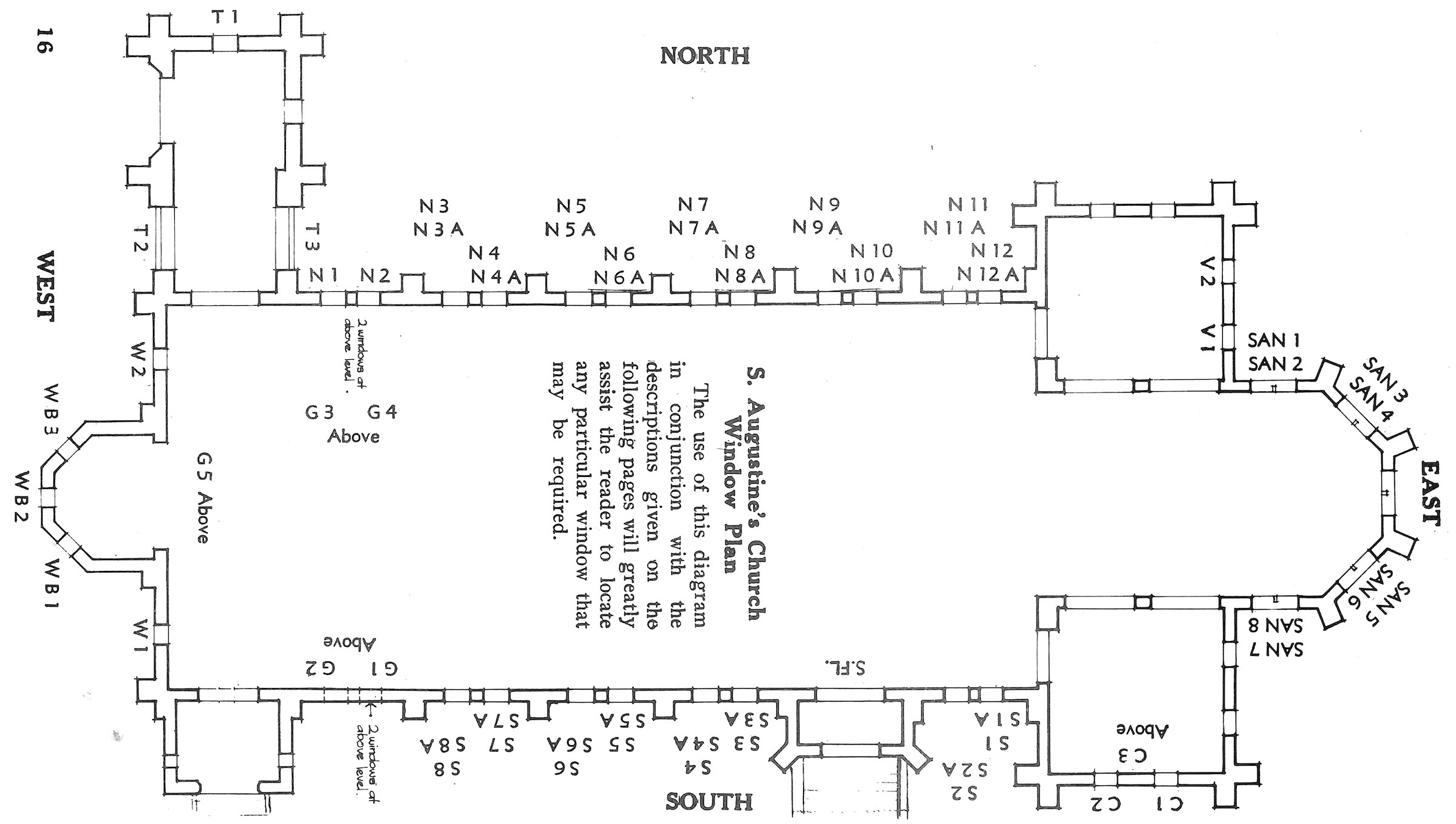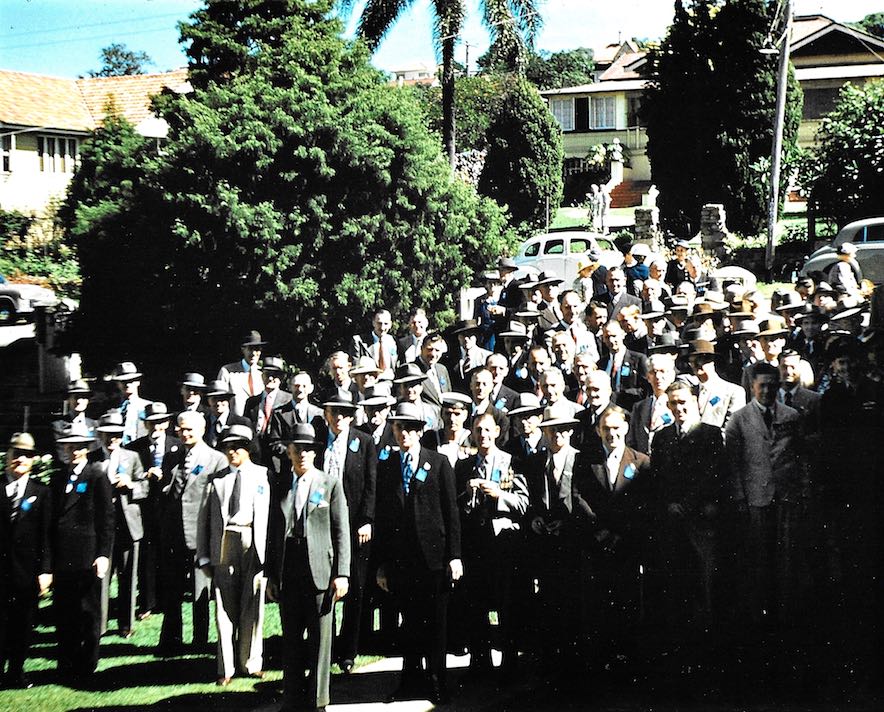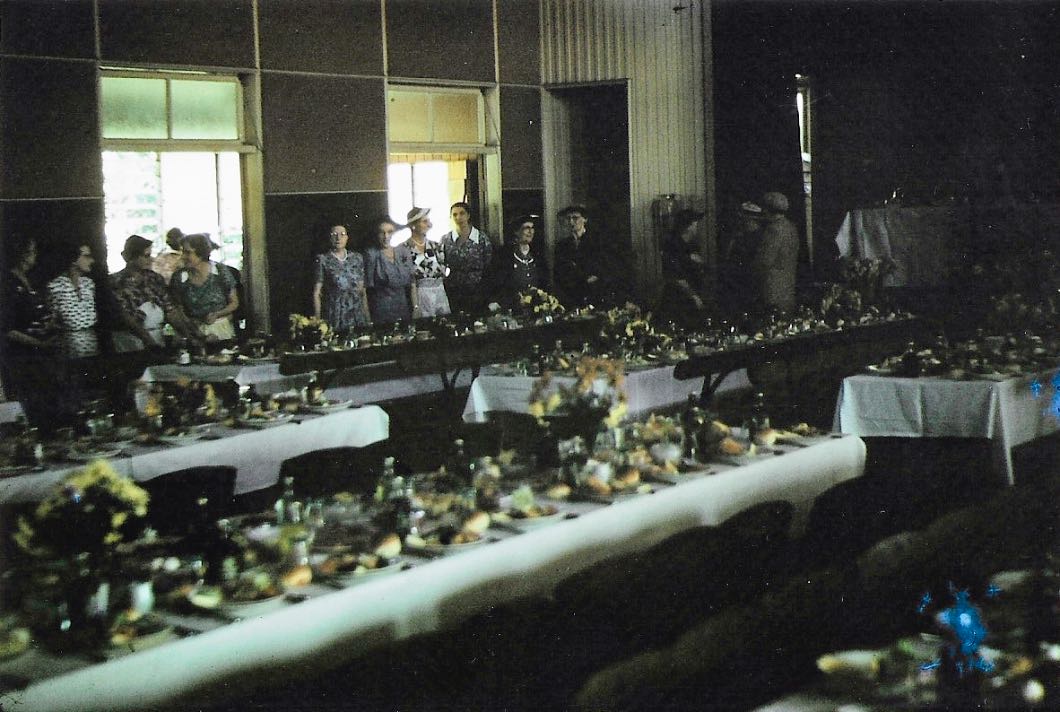Project Description
A Memorial Church
The Anglican Church of St Augustine’s Hamilton was built as a thank-offering to God for deliverance and peace, and as a War Memorial Church to the valour, sacrifice and endurance of Australian men and women who served in the Great War.
By the end of the hostilities, Australia had the highest casualty rate of the Allied Forces. Unable to lay loved ones to rest at home, Australians expressed their grief by erecting war memorials.
This beautiful church is an imposing two-story brick building set in leafy grounds on Racecourse Road, nick-named the ‘Jewel Box’ for its stunning stained-glass windows. After World War II a series of stained-glass windows were installed as a memorial to those who died in that war, including fifty-two parishioners. A prominent Queensland artist, William Bustard, designed the windows. The church is a war memorial commemorating both world wars. The tower was added to the church in 1961, dedicated to the men and women who served in World War II.
Different sections of the church represent different branches of the armed forces. The main body is a memorial to the Army, the organ loft to the Navy and the bell tower to the Air Force. In the area under the church is a Chapel, which is also a Columbarium. This chapel is open during the day for private prayer and reflection.
There are several historic texts on the church – refer to University of Queensland Library as a source. Acknowledgements to Brisbane Courier, & Brisbane City Council.
[sp20]
The Tower Bell
The church bell is a prominent feature of the building and reminds us of war memorials. It is also used for the celebration of weddings.
When the church bell rings at the start of a service, we acknowledge a moment of silence as we join with churches around the country in a time of worship, giving thanks to God.
The Memorial Bell
It is believed the bell dates back to 320AD, that Emperor Constantine hung the bell in a Romanian Church. During the First World War, British soldiers buried it in the beach, then seen by Australian soldiers who dug it up and took it on to Captain Thomson’s ship. It was received by the Diocese of Brisbane and given to St Augustine’s in the 1920s. The bell was stolen in 1978, and later returned from the Brisbane courts in 2000.
The bell plaque reads, ‘The Eastern Church Bell, rescued by the Allies in 1918 from a ruined mosque, is here restored to Christian use in memory of the HEROIC DEAD, being the gift of Capt. and Mrs. W. Campbell Thomson’.
Our High Regards for God
Saint Augustine or Austin of Canterbury, our patron Saint, died at Centerbury about 605 A.D. In 596, Pope Gregory sent a band of 40 Monks, led by Augustine to preach the Gospel to the heathen English. They arrived in Keny in 597 and were well received by Ethelbert, the local king, who himself, soon became a Christian.
‘Church of S. Augustine Hamilton Brisbane 1920 – 1970’ [sp20]
“Hoping that this generation will be as faithful to Him as the past – and so receive God’s blessing”
Rev. W. D. C. Dunbar ( 1952 – Third Rector)[sp20]
Photo 1: The first St Augustine’s Church, Hamilton, in 1900.
Photograph from Anglican Diocese of Brisbane, Records and Archive Centre, HAMIS063-14.
Photo 2: The pineapple farm.
Photo 3: St Augustine’s Anglican Church and Rectory, 1920’s.
Historical Books
The following books are Copyright, and may be used by permission only. The files below are on Google Drive and may take a few moments to display. Each file is approximately 40MB. Please use the Zoom tool to fit to the width of your screen.
‘CHURCH OF S. AUGUSTINE HAMILTON BRISBANE 1920 – 1970’
Very Large files: (approx 30 to 40MB each)
Photo 1: Church near completion 1920.
Photo 2: Fly over salute, 1960’s
Photo 3: Upper level window plan:
East Wall: The Sanctuary | SAN windows (facing Racecourse Road)
South: Our (or The) Lady Chapel | C Windows
South Wall: S Windows including SFL Fanlight (Adoration of Magi) Window
Below Church : Columbarium – All Souls Chapel (not shown above) | COL Windows
West: West side of Church with Baptistry | W Windows
West Tower (Above with bell) : T Windows
West Above: Gallery | G Windows & Te Deum Windows | Pipe Organ
North Wall: N Windows
North: Vestry | V Windows
Photo 4: Photos of a slide taken by Harold A Gates.
Returned Servicemen – Australian Corps W.W.1.
Church parade at St Augustine’s Church, Anzac Day 1952.
Photo 5: Luncheon St Augustine’s Anzac Day 1952.
Photo by Harold A Gates.

Coat of Arms
The symbol that looks like a Y-shape is representative of a pallium, (pall). This is an ecclesiastical vestment given to St Augustine by Pope Gregory. The cross above the pall indicates he was an Archbishop. Not all coat of arms show the cross. The larger cross may simply be dividing the coat of arms.
The right side of the shield includes a Lily. This represents the month of Mary, (May) and is the month St Augustine died.
In its purest form, the pallium (with cross) is gold, the larger cross and the lily silver, and the background black.
[sp20]
 [sp20]
[sp20]
St Augustine, (not to be confused with Augustine of Hippo) was appointed by Pope Gregory the Great to travel to Britannia to convert the “Angles”. Augustine set off with forty fellow monks. They had gone only a short distance when they were overcome with fear at the prospect of facing a barbarous, fierce and pagan nation whose language they did not understand. Augustine was sent back to Rome to persuade the Pope to allow them to return. Gregory refused, but sent Augustine back with letters of encouragement. On arriving in Kent, the group were received by King Ethelbert whose wife Bertha was already a Christian. Ethelbert allowed the brothers to remain. Upon his conversion, the king gave the brothers a residence in Canterbury (his capital). There followed mass conversions. In 602 Augustine, with the king’s help, repaired a church which he dedicated to the Apostles Peter and Paul. This church is known today as Canterbury Cathedral which is the centre of the Anglican communion to this day.
There are some records of Gregory’s correspondence with Augustine. In one letter he says that he has been reflecting of the pagan’s temples. He says that they are “on no account to be destroyed”, but are to be purified so that “the people, seeing that their temples are not destroyed, may abandon their error, and, flocking more readily to their accustomed resorts, may come to know and adore the true God.” Hearing that Augustine had performed miracles, Gregory urges him to remain humble understanding that the miracles are not of his own doing, but God working through him.
St Augustine was presented with various church items in 601, including the pallium, appointing him with the status of Archbishop in the Holy See. Various topics were raised with Rome regarding the church in Britain and Gaul, such as baptism, and marriage. There was caution by other areas in England such as Wales, however Augustine’s example influenced the great missionary efforts of the Anglo-Saxon Church.





